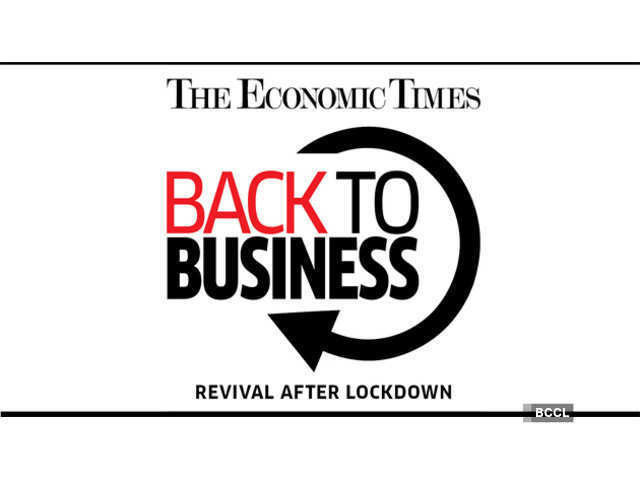[ad_1]
Call it the law of diminishing returns. After the Reserve Bank of India (RBI) fired the first bazooka on March 27, it was, perhaps, naïve to expect the second round of firing to match the firepower of the first — either in depth or in range.
But first the good news. The decision to increase the ways and means advances (WMA) limit of states by 60% till September, as against the earlier 30%, is a bold and much-needed step to give greater leeway to states to undertake Covid-19 containment and mitigation efforts, and plan their market borrowing programmes.
Similarly, the decision to give banks an additional 90 days over and above the existing 210-day deadline to finalise a resolution plan, without making 20% additional provision, gives them respite at a time when provisioning requirements are bound to rise due to higher non-performing assets (NPAs).

The clarification that the 90-day norm for categorising NPAs excludes the moratorium period for all accounts that were standard as on March 1, and non-banking financial companies (NBFCs), too, have the flexibility to consider such relief for their borrowers, also comes as a relief to both banks and borrowers. Many borrowers were under pressure even before March, thanks to supply-chain disruptions after the outbreak of the coronavirus in China and the lockdown in Wuhan.
Now, for the not-so-good news. Let me start with the second round of targeted long-term repo operations (TLTRO 2.0) of Rs 50,000 crore, for sectors that had not benefitted under the previous TLTRO, primarily NBFCs and micro-finance institutions (MFIs). Not only is the amount relatively modest, but the requirement that banks must invest TLTRO funds in investment grade paper also effectively denies succour to those most in need of support.
Small Change
Likewise, re-finance facilities (Rs50,000 crore) to the National Bank for Agriculture and Rural Development (Nabard), the Small Industries Development Bank of India (Sidbi) and the National Housing Bank (NHB), with sub-limits for each of these institutions, are likely to prove grossly inadequate. Especially in the case of Sidbi, for which a small amount of Rs15,000 crore has been ear-marked, since it is the micro, small and medium enterprises (MSME) sector that has been most impacted by the lockdown.
Though Governor Shaktikanta Das took care to clarify that the amounts were based on discussions with the institutions concerned, and that RBI would be willing to extend more funds if needed, it can be nobody’s case that Rs50,000 crore would suffice — even for a start.
As for the 25 basis points (bps) reduction in the reverse repo rate from the existing 4% to 3.75 %, this has, no doubt, been driven by the hope that this would discourage banks from parking their surplus liquidity (Rs6.9 lakh crore on April 15) with the RBI and get on with lending. Except that this is unlikely to move the needle when banks have turned completely risk-averse.
Especially since RBI has done nothing to quell banks’ fears that they could be hauled up later by the banking supervisor. The killjoy is the central bank’s March 27 Covid-19 Regulatory Package. This qualifies RBI’s permission for extending moratorium thus: ‘Accounts provided relief under these instructions shall be subject to subsequent supervisory review with regard to their justifiability on account of the economic fallout from Covid -19.’
The reality is that the decision whether or not to extend a moratorium is best left to the commercial judgement of banks. Also, it is impossible to quantify what exactly can be attributed to the ‘economic fallout of Covid-19’. The fear of RBI inspectors second-guessing banks’ lending decisions — needless to say, with the benefit of hindsight — is bound to make them extremely wary of extending relief, let alone embark on fresh lending. The fact that banks will have to maintain higher provision of 10% on all standstill accounts is a further dampener.
RBI could, instead, have been more forthcoming on regulatory forbearances. It could, for instance, have allowed banks a temporary breather from the mark-to-market requirement for the entire holding of government securities. This would have given banks some respite from making a provision when bond yields rise (and bond prices fall, since yields and price move inversely). It could also have reduced risk weights and capital adequacy norms.
Okay, Your Turn
It’s almost as if RBI is afraid of doing too much. Its reluctance to scrap the liquidity coverage ratio altogether and settle for a modest reduction to 80% from the present 100% seems to be driven by the same hesitance. But banks in India already maintain a cash reserve ratio (3%) and a statutory liquidity ratio (18%), and many would question the need for a liquidity coverage ratio over and above CRR and SLR.
This is not to say RBI hasn’t done a great deal. It has done most, if not all, of ‘whatever it takes’ and without any tangible support from the fisc. Indeed, it is no exaggeration to say that in the fight against Covid-19, it has done all the heavy lifting to date. The ball is now in the government’s court. And has been so for a while now, unfortunately.
[ad_2]
Source link